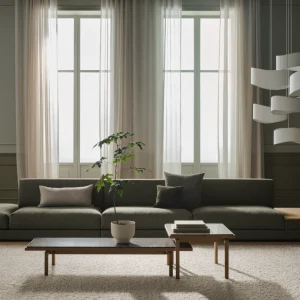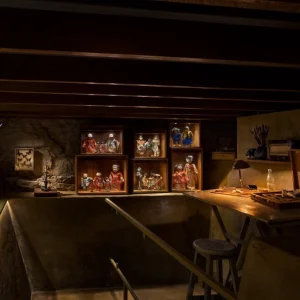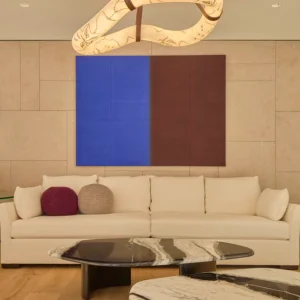Demonstrating cutting edge possibilities in sustainable and intelligent materials, the bright green bio-pavilion negates any cubby-holed description, or a run-of-the-mill categorization. The Mobius strip inspired design is an amalgamation of biodegradable bio composites with integrated intelligence that creates a dynamic interaction with its physical surroundings and its users.
Kim Herforth Nielsen, founder and principal architect of 3XN says that the vision of the project was to explore various possibilities in building with biodegradable and energy-generating materials, “creating an energy-self-sufficient architecture” that mimics the cycles of nature, and in turn, decompose after its biological cycle is over.
The Louisiana Pavilion is a joint venture of 20 companies with a timeline of four months to finish. Buzzwords such as ‘self-cleaning surface’, ‘phase changing materials’, and ‘built-in energy generating sensors’ were bandied about, to achieve a stunning piece of ‘arti-tecture’ that pulled in the visitors – to generate energy from their footsteps, and adhere to the group’s ‘Learning from Nature’ motto.
Well-known synthetic products have been substituted with biological and reusable materials. For the outer shell of the sculpture, glass fiber composites have been substituted with a bio composite from flax fibers cast in biological resin. Cork sheets replace polystyrene foam for the inner core.
For the inner side of the sculpture, the newest built-in technologies have been applied to create a dynamic and green architecture. On the top face of the pavilion, 1mm flexible solar cells are placed. The cells are cast in thin film making them applicable to double curved surfaces. Piezoelectric materials that generate an electric current from the weight of the visitors are laid into the floor. These features make the sculpture self-sufficient with energy to power the integrated LED lights.
The pavilion has a coating of nano-particles that makes the surfaces self-cleaning. Due to a hydrophilic nanostructure, rain water is dispersed beneath the dirt on the surface, leaving it cleaner. A second coating adds air cleaning properties to the pavilion. A chemical process called ‘photocatalysis’ decomposes up to 70% of pollutants from industrial smog. Documentation shows that the air quality is improved within an eight feet radius of air cleaning surfaces.
The pavilion retains heat by using phase changing materials. Heated by the sun, the material retains the energy, releasing it again when the temperature drops. At exactly 23 degrees Celsius, the material changes from a solid to a liquid form. When the temperature rises, the material absorbs energy and is liquefied. When the temperature drops, it solidifies and releases energy. In other words, the surface of the pavilion remains cooler when the temperature of the surroundings rises, and vice versa. It is estimated that phase changing materials can cut costs by 10 to 15% for heating and cooling of buildings.
‘Learning from Nature’ by 3XN can be seen at the Louisiana Museum of Modern Art as part of the ‘Green Architecture for the Future’ exhibition until October 2009.





